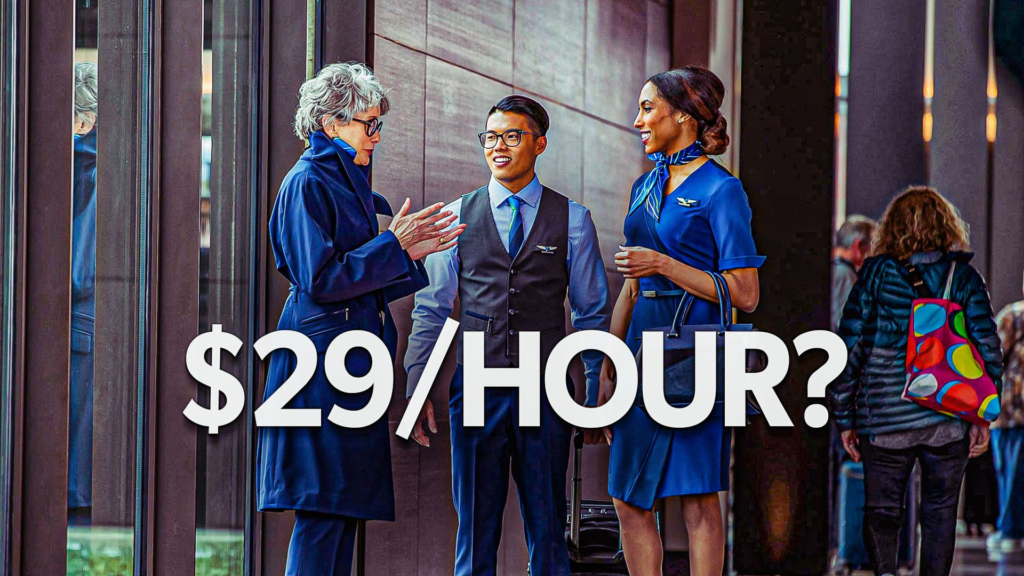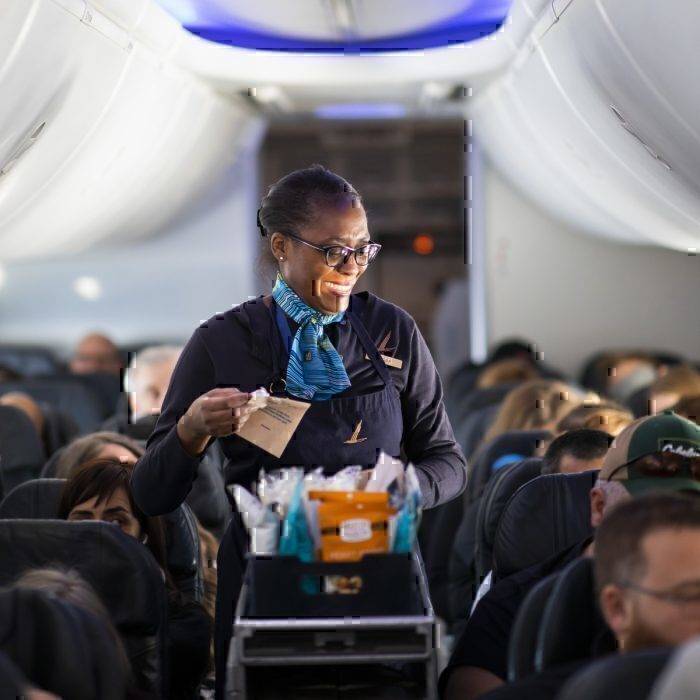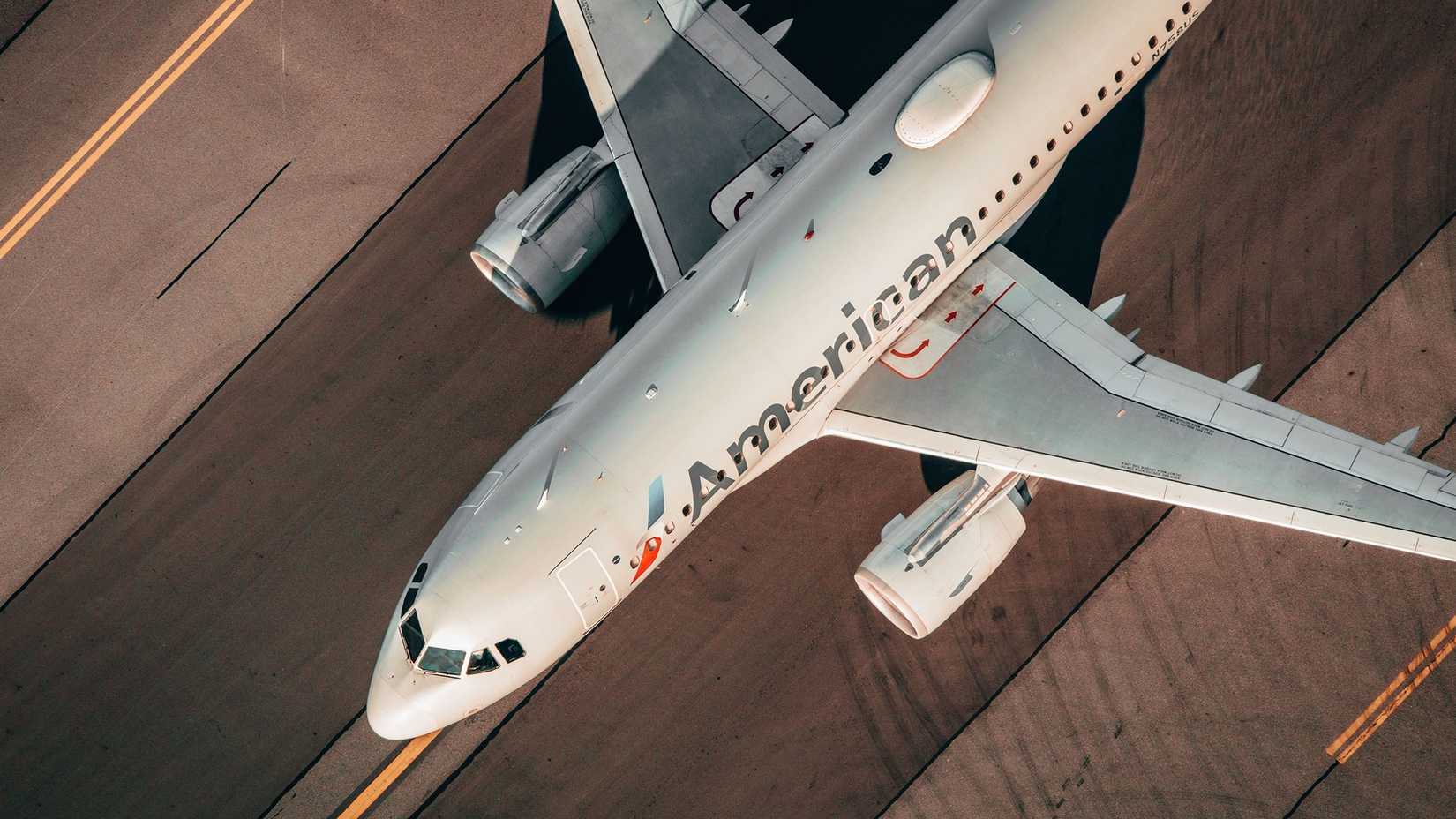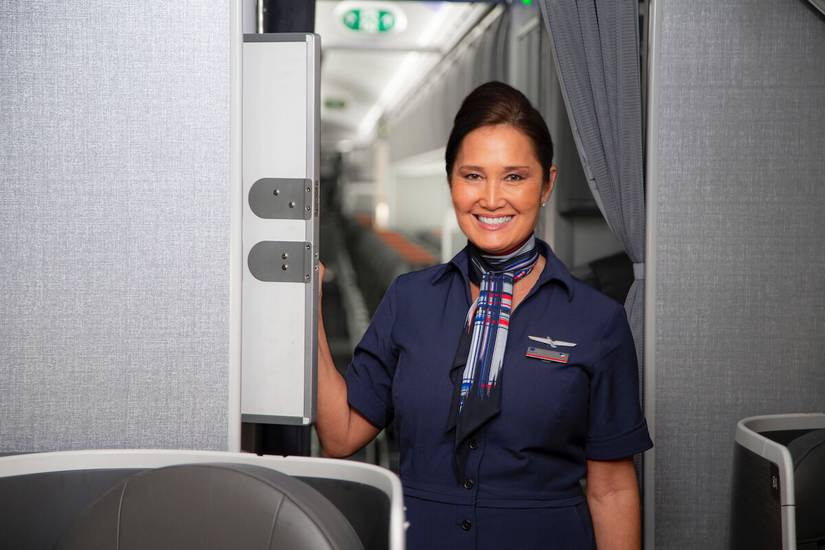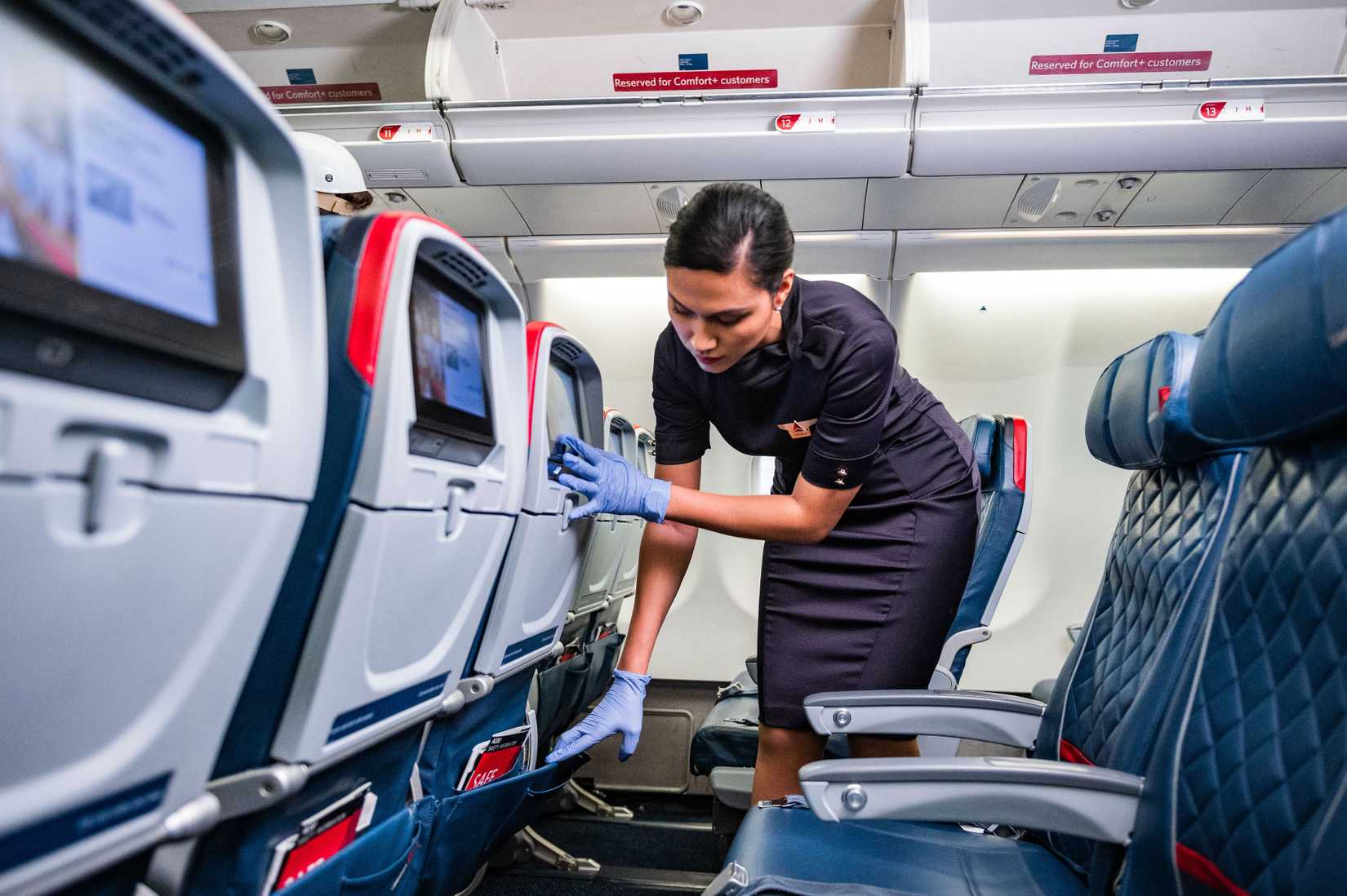In 2025, the question of how much flight attendants earn in the United States is once again drawing attention. With the rising cost of living, new union negotiations, and growing public interest in what cabin crew members actually take home, pay transparency has become a crucial topic. For anyone considering a career as a flight attendant, understanding how salaries are structured helps paint a clearer picture of life in the skies.
The reality is that Flight Attendant pay is not simple. Wages depend on several factors, including flight hours, airline contacts, per diem allowances, and even whether an airline pays for time spent on the ground. This article will take a closer look at what flight attendants can expect to earn in 2025, from entry-level starting pay to senior crew at the top of their scales, while highlighting the differences between airlines, contracts, and work schedules.
Base Pay and Average Earnings
Flight attendants work under detailed collective agreements that govern every aspect of their compensation and benefits. These contracts, typically negotiated by unions, outline step increases, duty pay, per diem, bonuses, and allowances. At United Airlines, new flight attendants earn US$28.88 per flight hour, rising to US$67.11 by year 13. A proposed update would boost starting pay to US$36.92 per hour, lift senior pay to US$96.58 per hour, and, for the first time, include boarding pay.
Regional carriers, while historically on the lower end, are catching up. Endeavor Air — a Delta Connection subsidiary — starts at US$25.84 an hour, reaching US$29.70 after two years of service. These airlines supplement base wages with daily per diems, essential for those spending nights away from home. Incremental rises and better duty protections have made regional flying more competitive in the past decade.
Modern contracts also reflect shifting workplace expectations. Airlines now offer compensation for reserve duty, ground delays, and leadership roles, plus incentives for holiday or international flights. As one United agreement shows, reserve attendants earn an extra $2 per hour, while premium pay applies to lead positions such as purser. These evolving contracts highlight a wider trend that airlines are finally quantifying all the hidden hours that make up a flight attendant’s workday.
What Crew Members Say About Life Behind The Payslip
Behind the data are the personal stories of crew members balancing passion with practicality. On Reddit, flight attendants share candid accounts of how their pay works in real life. One United flight attendant explained, ”You get one hour of pay per flight hour, or half an hour per hour away from base, whichever adds up to more. Usually, the flight hours win out.” Others mention long ground delays: “You’ll get ground pay for a maximum of 30 minutes on a four-hour sit. The first two and a half hours aren’t paid.”
Many attendants admit that the early years can be financially tight. Threads titled “How does one afford to live?” reveal that new hires often live with roommates, pick up extra shifts, or take side jobs. With seniority and consistent long-haul flying, however, some reach six-figure annual earnings. Those willing to endure packed schedules or back-to-back trips typically see their income climb the fastest.
These insights also reveal the emotional side of the profession. Despite modest beginnings, most flight attendants describe the job as deeply rewarding — travel perks, global friendships, and schedule flexibility often outweigh the early pay struggles. The job’s financial rewards grow with experience, but its lifestyle appeal is what keeps many in the sky. Many flight attendants also cite the strong sense of community within their airline crew, where teamwork and shared challenges strengthen their bonds. Surveys completed by the Association of Flight Attendants indicate that job satisfaction remains high, with over 80% of respondents stating they would choose the career again despite its demanding nature.
Which Airlines Lead On Pay In 2025?
Not all airlines compensate equally, and 2025 has brought new front-runners. Bandana Resources lists ![]() Delta Air Lines flight attendants among the highest earners, making up to US$107,000 per year (around US$83 per hour) at the very top of the scale.
Delta Air Lines flight attendants among the highest earners, making up to US$107,000 per year (around US$83 per hour) at the very top of the scale.
![]() American Airlines follows at US$109,000 annually, including boarding pay, while reaching US$106,800 at the top tier.
American Airlines follows at US$109,000 annually, including boarding pay, while reaching US$106,800 at the top tier. ![]() United Airlines caps near US$80,500, or about US$67 per hour, after 12 years. JetBlue offers similar high-end hourly rates at US$67.87.
United Airlines caps near US$80,500, or about US$67 per hour, after 12 years. JetBlue offers similar high-end hourly rates at US$67.87.
Recent union deals have pushed these figures upwards. In early 2025, Alaska Airlines flight attendants ratified a contract delivering 18–28 percent raises, two years of back pay, and boarding pay provisions. Other major US carriers are pursuing similar gains, responding to mounting pressure from crew unions and public attention on unpaid duty time.
2025 Top Airline Flight Attendant Pay
|
Airline |
Top Annual Pay (Approx) |
Top Hourly Rate (Approx) |
|
American Airlines |
US$109,000 |
US$83 per hour |
|
Delta Air Lines |
US$107,000 |
US$83 per hour |
|
Alaska Airlines |
US$106,800 |
US$82 per hour |
|
JetBlue Airways |
US$105,000 |
US$67 per hour |
|
United Airways |
US$80,500 |
US$67 per hour |
|
Endeavor Airlines (Delta Connection) |
US$62,000 |
US$29.70 per hour |
The Guardian reported that airlines across North America and Europe are facing increasing scrutiny over unpaid ground time. Many are now acknowledging that time spent boarding, waiting, or deplaning is part of the workday. These reforms suggest the next generation of contracts could finally close the long-standing gap between scheduled hours and paid hours. Industry analysis predicts that once one major US carrier finalizes full duty pay, competitors will be forced to follow suit to retain their staff. The shift marks one of the most significant pay structure overhauls in commercial aviation since the 1900s.
Why Flight Attendant Salaries Differ So Widely
Several key variables determine how much a flight attendant earns, even among colleagues doing similar routes. The type of flying is one of the biggest factors. Long-haul international trips generally include night differentials, foreign allowances, and layover pay, while domestic schedules often have flatter structures. Crew members on overseas routes can significantly boost their annual income with these extra components.
Ground compensation policies are equally influential. Some airlines pay for time spent boarding, deplaning, or during delays, while others still only compensate between takeoff and landing. As The Guardian has noted, this has become a focal point in union negotiations. More attendants now demand full pay for all duty hours, echoing a growing sentiment across the industry that “if we’re at work, we should be paid.”
Cost of living and base location also add another layer of complexity to the issue. Flight Attendants stationed in major cities or international gateways often have higher allowances to offset expenses, while those at smaller hubs may enjoy lower housing costs but fewer premium flights. Add in the seniority systems, company profitability, and route mix — and it’s clear why total earnings can vary dramatically, even under the same airline banner.
Reaching The Top Of The Pay Ceiling And How To Break It
Most flight attendants reach the top of their pay scale after about 12 years. Beyond that, pay raises depend on new contracts or cost-of-living adjustments. At United, for instance, the ceiling sits at US$67.11 per hour at year 13, though a proposed contract change could lift that significantly. These plateaus can last years, making ongoing negotiations vital for keeping wages competitive with inflation and other airlines.
However, experienced attendants still find ways to increase their earnings. Taking on leadership roles such as purser or inflight service supervisor brings higher hourly pay. Some pick up extra trips, volunteer for holiday duties, or focus on high-per-diem international routes. Others switch airlines mid-career to chase stronger contracts or better scheduling systems.
Veteran flight attendants also value non-monetary benefits such as predictable rosters, premium layovers, and seniority-based bidding rights, which often outweigh the allure of another raise. For many, the long-term reward is about control over their work-life balance, proving that the top of the scale isn’t just about money — it’s about flexibility and choice.
The Future Of Flight Attendant Pay
The pay structure for flight attendants is changing faster in 2025 than at any other time in recent memory. Rising living costs, union activism, and heightened awareness of unpaid ground time are pushing airlines to modernize their pay systems. The Guardian has highlighted similar shifts in Canada and Europe, where regulators and unions are redefining what counts as ‘working hours’.
Upcoming US labor agreements at United, American, and Delta are expected to set new industry benchmarks. Entry-level pay remains modest, but the upward trend is clear. Airlines are increasingly competing for qualified cabin crew, recognizing that attractive pay and fair conditions are key to staff retention.
Still, for many flight attendants, the appeal of the job extends far beyond money. Flexibility, global travel, and the camaraderie of the crew community remain powerful motivators. If current reforms continue, 2025 could mark the start of a new era — one where cabin crew are properly compensated for every part of their job, both in the sky and on the ground.


